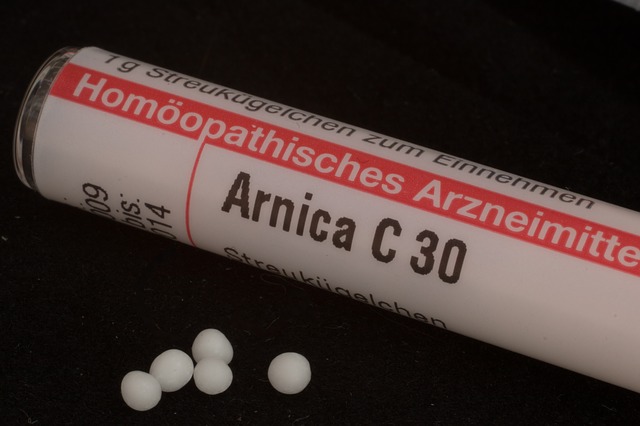Background. Ovariohysterectomy [OH] is one of the most frequent elective surgical procedures in routine veterinary practice. Arnica montana is a well-known medicine in phytotherapy, with proven analgesic, anti-inflammatory, antiseptic, healing, antioxidant and immunomodulatory activity. However, there is still a shortage of studies on the action and effects of the homeopathic formulation of the medicine on animals. The aim of this study was to evaluate analgesia with Arnica montana 30C during the postoperative period after elective OH.
Methods. Thirty healthy female dogs, aged 1-3 years, weighing 7-14 kg, were selected at the Veterinary Hospital in Campo Mourão, Paraná, Brazil. The dogs underwent the surgical procedure with an anaesthetic protocol and analgesia that had the aim of maintaining the patient’s well-being. After the procedure, they were randomly divided into three groups of 10. One group received Arnica montana 30C; another received 5 per cent hydroalcoholic solution; and the third group, 0.9 per cent NaCl saline solution. All animals received four drops of the respective solution sublingually and under blinded conditions, every 10 minutes for 1 hour, after the inhalational anaesthetic had been withdrawn. The Glasgow Composite Measure Pain Scale was used to analyse the effect of therapy. Analysis of variance [ANOVA] followed by the Tukey test was used to evaluate the test data. Statistical differences were deemed significant when p ≤0.05.
Results. The Arnica montana 30C group maintained analgesia on average for 17.8 ± 3.6 hours, whilst the hydroalcoholic solution group did so for 5.1 ± 1.2 hours and the saline solution group for 4.1 ± 0.9 hours [p ≤0.05].
Conclusion. These data demonstrate that Arnica montana 30C presented a more significant analgesic effect than the control groups, thus indicating its potential for postoperative analgesia in dogs undergoing OH. — Travagin DRP et al in ©Homeopathy, November 15, 2021. doi: 10.1055/s-0041-1732352.
Homeopathy In Acute & Chronic Health Conditions
Researchers in Boston explored the use of homeopathy among adults and children in the United States. They analysed data from the National Health Interview Survey, a large population-based survey conducted in 2012.
Based on the data, approximately 2 per cent of both children and adults in the United States used homeopathy over the previous year. Most users acquired homeopathic products over-the-counter [OTC] without consulting homeopathic practitioners.
The users commonly reported respiratory, ear, nose, and throat complaints, followed by musculoskeletal conditions and conditions involving fatigue, sleep, stress, or chronic pain. In general, users perceived that homeopathic treatments were helpful in treating their health problems. Intrigued by this data, the researchers conducted a review to further explore the role of homeopathy in addressing public health concerns of infectious diseases, pain conditions, mental health, and cancer.
After reviewing studies conducted in the US, Europe, and Brazil, the researchers suggest that homeopathy may be a possible alternative to reduce antibiotic resistance in the treatment of infectious diseases. Many of the studies focused on acute respiratory, ear, nose, and throat infections in children, such as otitis media. However, the researchers also identified earlier 19th and 20th century reports suggesting that homeopathy may help treat more serious conditions like pneumonia and sepsis.
Fibromyalgia is the most common pain-related condition that has been studied in homeopathic literature. A meta-analysis of five existing studies showed that homeopathic treatment reduced tender points, pain intensity, and fatigue, compared to placebo in fibromyalgia patients. Homeopathic preparations have also shown promise over placebo [dummy pill] in the treatment of migraine headaches in children and pelvic pain related to endometriosis, anxiety, and depression.
The outcomes explored in cancer studies, centred on quality of life [QoL], symptom improvement, and survival. Overall, the studies showed encouraging results. Women with breast cancer using homeopathic preparations, combined with aromatase inhibitors, showed fewer sites of joint pain, reduced frequency and intensity of pain and lower use of analgesics, compared to another group of women who used aromatase inhibitors only. — ©Dr Suzanne M Robertson, PhD, in Medical News Bulletin

